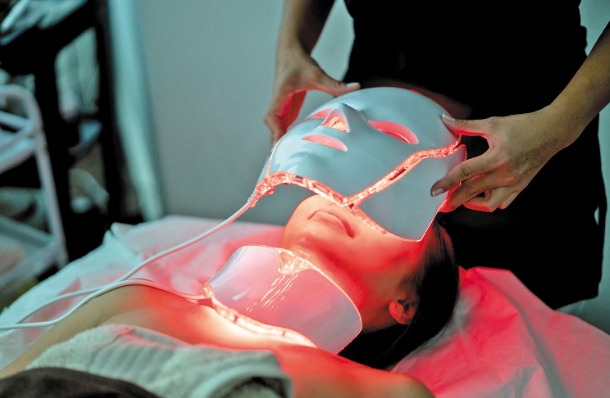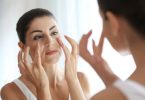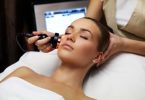Red light therapy is a popular acne treatment that has been used for years. It’s safe, painless, and effective. This article will answer all your questions about red light therapy for acne!
Acne is a skin condition that affects millions of people each year. It can be difficult to manage, and many acne sufferers are looking for an easy solution. Red light therapy may provide the answer you’re looking for!
We’ll also discuss some acne treatment options, so you have more information when considering whether or not this could work for you. In addition, check out the Heliotherapy Research Institute that can help you deal with your problem.
What is red light therapy?
Red light therapy is a non-invasive acne treatment that uses red and infrared wavelengths of light to destroy the bacteria associated with acne. Red light penetrates deep into the skin, allowing it to be effective on all types of breakouts, including cystic acne.
Who can use red light therapy?
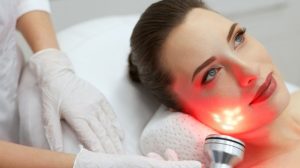
Red light therapy is safe for all skin types and does not cause the irritation or dryness that some topical acne treatments do. Red light targets bacteria, so it’s an effective option for those with inflammatory acne as well as blackheads and whiteheads. It also works to shrink pores and reduce oil production, so it’s a good option for those with acne-prone skin.
Red light therapy can also be an effective treatment for hormonal acne because the LED panels emit wavelengths that penetrate deep into the sebaceous glands to stop them from producing excess oil.
How red light therapy works to treat acne
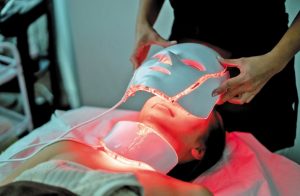
Red light therapy is thought to work in two ways to treat acne: by reducing inflammation and stimulating collagen production.
The red light waves penetrate the skin and target the cells that produce sebum, which is what causes acne. When these cells are stimulated, they produce less sebum, which reduces the number of breakouts you experience.
The red light also affects the bacteria that causes acne, known as P. acnes. The treatment kills acne cells in its various life cycle stages by disrupting cellular metabolism through a process called photodynamic therapy or PDT. In this process, a chemical is applied to the skin that is activated by the red light, causing a reaction that kills the bacteria.
Red light therapy is also thought to help improve collagen production. Collagen is responsible for giving skin its elasticity and strength, and it begins to decline as we age. By stimulating collagen production with red light therapy, you can reduce the appearance of fine lines, wrinkles, and scars.
Collagen production is also helpful in the treatment of acne because it speeds up the healing time for breakouts. When collagen levels are higher, skin cells repair themselves faster after being damaged by a breakout.
How to use red light therapy for acne
There are a few different ways to use red light therapy for acne treatment. The way you choose will depend on what type of equipment is available as well as your own personal preference.
The most common way is to use a red light therapy device that emits red and infrared light. You can lay it across your skin or put it close enough for the rays to reach you, usually around six inches away.
Another option is to use an infrared sauna. These far-infrared rays are a type of red light that penetrates your skin much deeper than usual and can help treat conditions like acne from within. If you have access to one at home or in a gym, this can be a convenient and effective alternative to other red light therapies.
Finally, you also have the option of going under a red and near-infrared lamp for your treatment. This is similar to the results you would get from laying in front of one like what’s used at tanning salons (minus all the harmful UV radiation). The infrared lamp will emit infrared light rays that will help to clear up your skin.
What are the benefits of red light therapy for acne?
Red light therapy has many potential benefits for people who suffer from acne, including:
- Clearing up blemishes and spots;
- Preventing new breakouts from forming;
- Reducing the appearance of scars and dark spots left behind by acne;
- Keeping pores unclogged and clear to prevent new breakouts from forming;
- Stimulating collagen for improved and more even skin tone;
- Treating inflammation, redness, swelling, or irritation that can come with having acne.
There is also some evidence that red light therapy can be useful for people who suffer from psoriasis, especially when used in conjunction with other therapies like topical treatments.
What are the side effects of red light therapy?
Red light treatment is generally considered to be safe and there aren’t many reports of negative side-effects associated with it. However, some people have reported a few minor side-effects, such as:
- A temporary increase in acne breakouts immediately after treatment;
- Minor skin irritation;
- Dryness or flaking of the skin;
- Redness or warmth on the surface of the skin.
If you experience any of these side effects, they should lessen as your body adjusts to red light therapy for acne treatment. Also, always consult with a dermatologist before starting any new acne treatment, even if it’s something as simple as red light therapy.
Conclusion
Red light therapy is a relatively new acne treatment that is effective for some people. It is non-invasive, painless, and does not require any special equipment. However, more research is needed to determine the long-term benefits and side effects of red light therapy for acne. If you are considering using this treatment, first consult a dermatologist.
Author’s Bio:
Olivia Sanders is Content Marketer at Heliotherapy Institute.

